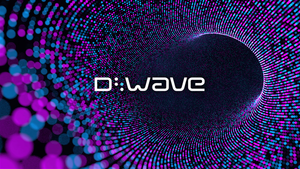--News Direct--
By Meg Flippin, Benzinga

When it comes to robots in the operating room, they are falling short. Robots should save hospitals time and money and give patients better outcomes, but those benefits have yet to be seen. As it stands, the current robots decrease surgical throughput, add costs, and cannot achieve parity with manual procedures.
Take total knee replacement surgeries as one example. The average time for a manual total knee arthroplasty (TKA) is 88.7 minutes. With a robot, it is 105.5 minutes. What’s more, robotic-assisted TKA is 10% more expensive than manual TKA. The robotic systems currently on the market also have a steep learning curve.
Nevertheless, the demand for robots in the operating room is growing as more hospitals and surgeons adopt this approach to treatment and care. That’s particularly true in orthopedics, with some estimates predicting that 50% of all knee procedures will be robotic by 2027, up from 12% today. With almost 88% of knee surgeries still performed manually today, the long-term growth trajectory for robotics in orthopedic medicine could be impressive.
It’s also growing from a large base. The addressable market for companies that can change the current economics of robotic surgery is significant. According to Fortune Business Insights, the orthopedic device market alone is forecast to grow by a CAGR of 4.5% through 2030, reaching $80.28 billion. Driving the growth is a rising prevalence of osteoporosis and musculoskeletal diseases, an aging population, and an increase in sports-related injuries.
Mako Seems To Have A Lock On The Market … For Now
Currently, the dominant player in robotic knee replacements is Mako, the unit of Stryker Corp. (NYSE: SYK) that makes robotic arm-assisted surgical equipment. It accounts for over 50% of Stryker’s surgical knee volume and 70% of the press-fit (also cementless) knees. Mako is unique in that it combines patient-specific CT-based planning with robot enabled saw cutting. This combination of personalized planning and efficient bone cutting has driven Mako’s popularity with doctors.
But Mako has opportunities for improvement. The arm has only four joints, which appears to limit the workspace and potentially the ease of use for future applications. While Mako’s haptic constraints enhance safety over manual cutting, the virtual boundaries still require care and caution. Mako’s navigation also requires arrays rigidly fixed to bone with pins and manual point sampling. Navigation pins have been shown to introduce a risk of fracture and infection in some instances.
New Player On The Scene Aiming For Dominance
Monogram Orthopaedics Inc. (NASDAQ: MGRM) is taking a page from Mako, aiming to revolutionize orthopedic joint replacement surgery with its mBôs robotic technology that will aim to link 3D printing and robotics with advanced pre-operative imaging. Monogram’s mBôs is designed to enable precise virtual intraoperative assessment of patient specific laxity in order to plan where to make cuts for proper implant placement. These tools can dramatically simplify the complexity of joint reconstruction.
With mVision, Monogram’s recently announced navigation solution, the goal is to increase the number of daily surgeries hospitals can perform, lower surgery costs, and minimize clinical risk. The robot is also designed for ease of use, aiming to minimize the learning curve and level of expertise needed. The company hopes that enhancements like these could help advance the standard of care in orthopedic robotics and hopefully make robots ubiquitous in the operating room.
Monogram CEO Ben Sexson says the company’s ultimate vision is to combine a surgical robot that addresses economic and clinical pain points with more personalized implants. The company believes that the current generic, “one size fits none,” model is too costly and is not likely optimal for patients.
Robotics could enable increased personalization of the implants. Monogram wants to get to a point where surgeons use 3D-printed implants that are designed based on the patient’s unique characteristics. The custom implants could enhance implant performance with, for example, improved coverage and minimized bone removal. The company believes custom implants could improve the initial stability of implants to facilitate bone ingrowth (which would reduce the need for bone cement to hold them in place).
The vision is for the mBôs system to precisely cut the bone and put the custom implant in place. Sexson said the company is tracking to commercialize a robot that solves clinical and economic problems, while also enabling the next generation of 3D printed patient optimized implants.
Promising Progress
In preclinical trials that simulated cadaver surgeries with an mBôs prototype, Monogram reports that the robot was able to prepare the bone for implantation in approximately 40 minutes, which is significantly faster than the time it takes today. The company’s goal is to cut that down to 20 minutes.
“The mBôs robot aims to combine safety, ease of use, streamlined cost, novel implant design, broad clinical functionality, and speed to help drive the next wave of robotic adoption in orthopedics,” Monogram says on its website.
But it’s not only performing in trials. The company recently announced it delivered its first surgical robot to one of the world’s largest global robotics distributors. It marks the first sale for Monogram.
“Delivering our first robot and realizing our first commercial revenues validates our technology and represents a pivotal milestone for our strategic roadmap,” Sexson said when announcing the milestone. “Our system is performing at an extremely high level. We now look forward to seeing how our robot competes and scales in the real world. We hope to see the mBôs robot contribute to advancing the standard of care for orthopedic patients worldwide.”
The company has stated that its goal is to obtain FDA clearance as quickly and economically as possible. Further, they may have a strategy to exceed regulatory timeline expectations.
"We have been exploring the technical feasibility of a semi-active system, and the results are promising," said Sexson. "A semi-active system could mitigate the possibility of a clinical trial and have distinct performance advantages over a fully autonomous system, such as cutting efficiency. We believe surgeons would be receptive to a robot with autonomous and semi-active modalities or a combination of both because of the distinct advantages of each system. This approach could theoretically be extremely favorable to our submission timeline."
The company recently shared that it's on track with plans to submit its mBôs 510(k) for FDA clearance in the second half of 2024.
The critical question is how long the company needs to obtain FDA clearance for its mBôs system. In its recently reported 10-K, it wrote, “Regulatory strategy can be dynamic as new facts and opportunities emerge. Our goal is to obtain FDA clearance as quickly and economically as possible. It is management’s interpretation of the FDA’s main cited technical differences of the “active” embodiment of our mBôs system with the predicate that could justify a clinical study to establish substantial equivalence, related primarily to foot pedal control of the system, i.e., hands-free active cutting. The company has been exploring the technical feasibility of a semi-active system (an embodiment that would not allow for remote operation) that we anticipate could minimize cited technical differences with our predicate and potentially obviate the need for clinical data with our 510(k) submission. Our preliminary market research suggests surgeons could be receptive to a robot with active and semi-active modalities. The company is exploring submitting a semi-active modality 510(k) first without clinical data and then submitting for the active modality after obtaining OUS clinical data. This approach is still under investigation but could theoretically be favorable to our commercialization timeline.” This interesting recent addition to the filing could be something to keep a very close eye on.
Hospitals and surgeons are incentivized to find ways to more efficiently treat patients and ensure better outcomes. Robots are supposed to achieve that, but many on the market fall short. Monogram is focused on changing that with its mBôs robot.
Featured photo courtesy of Monogram Orthopaedics.
Benzinga is a leading financial media and data provider, known for delivering accurate, timely, and actionable financial information to empower investors and traders.
This post contains sponsored content. This content is for informational purposes only and not intended to be investing advice.
Contact Details
Benzinga
+1 877-440-9464
Company Website
View source version on newsdirect.com: https://newsdirect.com/news/monogram-orthopaedics-nasdaq-mgrm-aims-to-overcome-robot-shortcomings-with-its-advanced-solution-387043475






